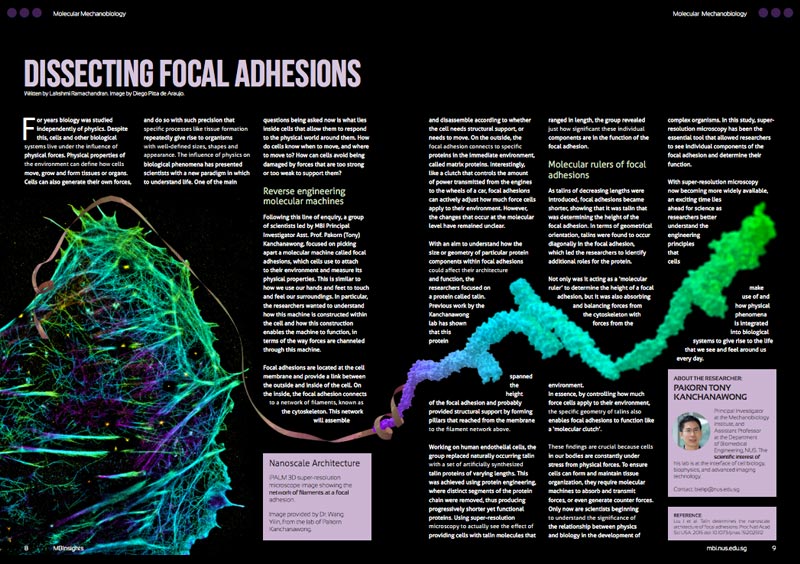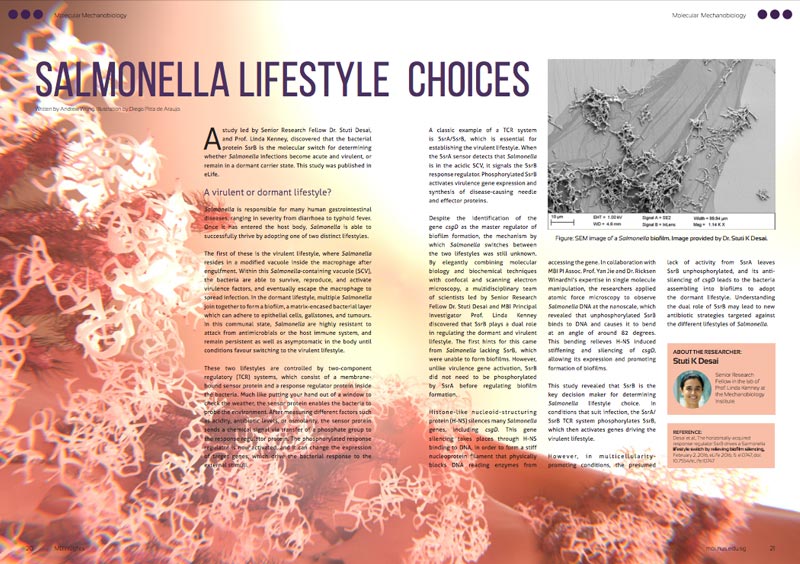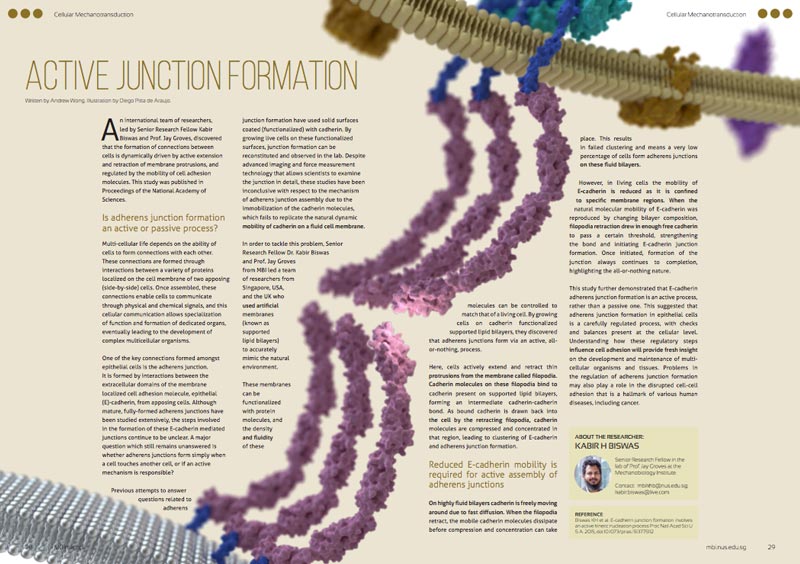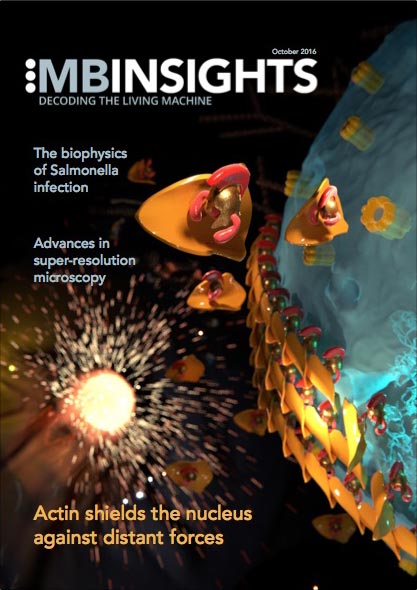MBInsights Annual
2016 Edition
MBI Science Communications | OCT 2016
An annual summary of research at the Mechanobiology Institute, National University of Singapore
The purpose of these synopses is to show the breadth of the research coming from the MBI. We are very proud of the fact that we have been able to build an institute with state-of-the-art capabilities in super-resolution microscopy and microfabrication. Our open lab environment and the energy of our students and postdocs have combined to take advantage of our experimental tools to answer important biological questions. Because we believe that these tools should be utilized to solve many more problems in the biomedical sciences, we invite you and your colleagues to join us in collaborative studies to solve those problems. Many different disciplines are needed since the problems need the tools of physicists, biologists, computational scientists, and engineers, working side-by-side to better understand how biological systems integrate mechanical cues and physical forces from the world around them.
We hope that you find these research summaries interesting, and we invite you to join us in collaborative studies at the MBI.
Table of Contents
Adhesion ABC
Discovering the universal building blocks of cell adhesion
Dissecting Focal Adhesions
Super-resolution imaging reveals how talin sets the height of focal adhesions
Why Do Cells Stretch?
Cycles of mechanical stretching and relaxation promote cell spreading and growth 26 Surviving an Immune Attack How Salmonella has evolved to embrace acid attack by the immune system
Regulating Neuron Growth
The protein BNIP-H transports neurotransmitter precursors to the synapse along the cytoskeleton using kinesin motors
Forces Acting Far and Wide
How local forces applied on the cell surface induce distant effects on actin remodeling
Multicolour Super Resolution Imaging
A new method to monitor dynamic protein binding at subsecond timescales in living cells
Shaping Cell Behaviour
Growing cells on different geometries leads to distinct changes in cytoskeletal organization and nuclear deformability
Salmonella Lifestyle Choices
The bacterial protein SsrB acts as a molecular switch to determine whether Salmonella is infectious or dormant
Defining Adhesion Clusters
Nanoscale observation of the formation of adherens junctions between cells
Biology in a Twist
The inherent asymmetry of actin filaments determines the ‘handedness’ of cells
Active Junction Formation
Functionalized surfaces reveal that cell-cell junctions form via an active, all-ornothing process
A Mechanical Stop Sign
Cancer cells ignore topographic instructions aimed at slowing growth
When Stressed Cells Relax
Mechanical processes facilitate membrane remodeling in response to physical stress
Cellular Instructions for Tissue Repair
How tissue geometry regulates wound repair mechanisms
Forcing Wounds Closed
A cellular tug-of-war mechanically drives gap closure
Fluid on Soft…Solid on Stiff
Cells adapt their internal organization depending on the stiffness of their surroundings
Lipid Anchors Sustain Life
Glycolipid anchors stabilize the embryonic membrane against mechanical stresses
Shaping Lumens by Force
Using a minimal organ approach reveals that mechanical tension guides lumen elongation
Clustering Drives Formation of Subcellular Morphogen Gradients
A new theoretical model explains concentration gradient formation during development 22 H-NS Proteins as Gene Silencers Single-molecule manipulation picks apart the mystery of gene silencing
Microfluidics for Liquid Biopsies
A spiral microfluidic chip enables fast, non-invasive isolation of cancer cells from blood
Culturing Circulating Tumour Cells
Specifically designed microwells allow capture and cultivation of tumour cells to improve patient diagnosis and treatment
Single Objective Lightsheet Microscopy for 3D SuperResolution
Imaging Innovative microfabrication brings super-resolution imaging to conventional microscope systems








